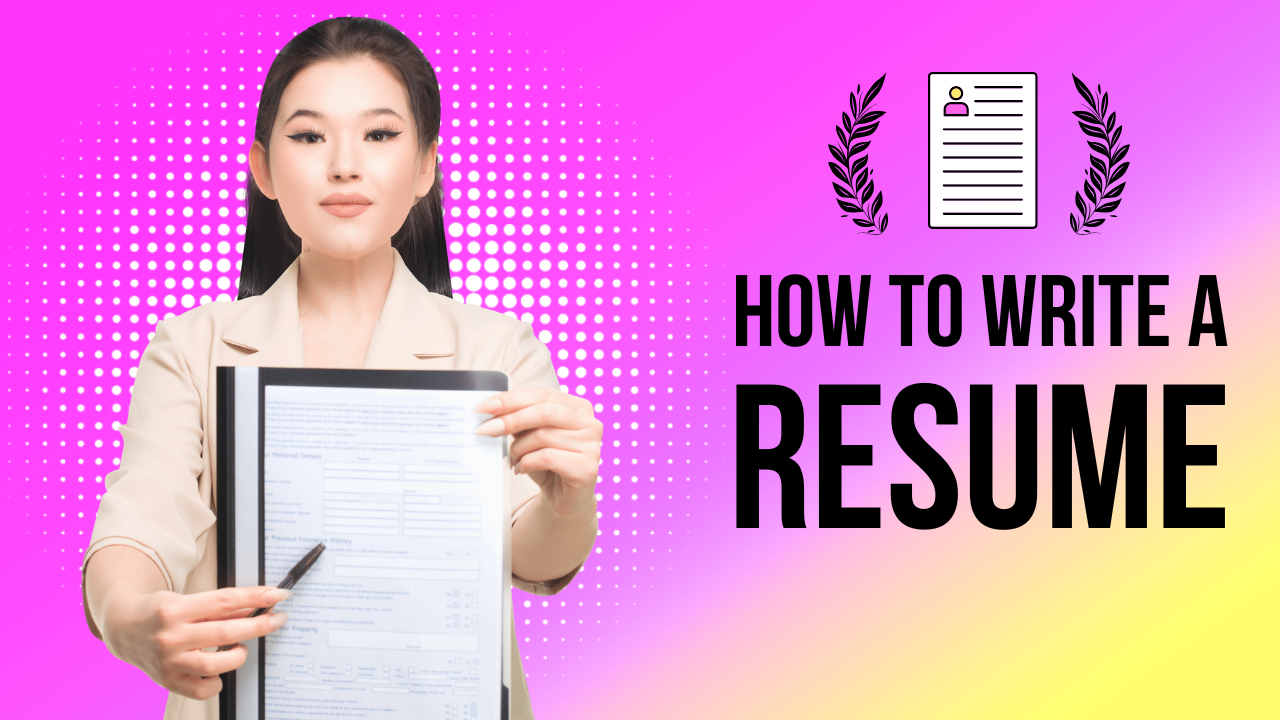It might be threatening to write a resume, particularly if you want to leave a lasting impression on potential employers. Don’t worry, though! We’ll take you step-by-step through the process in this tutorial to make sure you crop a paper that not only cabinets your skills but too captures your personality. Let’s get started on making résumé that stands out.
1.Recognize the Resume’s Objective
Above all, it’s critical to know that a resume serves as a marketing tool. Its main objective is to succinctly and clearly highlight your abilities, activities, and experience. Resumes are used by employers to assess your aptness for a position, so it must grab their attention right away.
2. Select the Appropriate Format
You can select from a diversity of resume formats, each with a separate function. Among the most popular formats are:
Sequential: This format is best suited for people with a strong job past because it presents your work history in reverse sequential order.
Useful: This highlights your abilities over your service background. It’s ideal for people with gaps in their service or changing careers.
Combination: This format has aspects of both sequential and functional formats, as the name suggests. It gives a chronology of your work history and showcases your abilities.
Choose a format that complements your job objectives and effectively highlights your strengths.
3.Create a Powerful Header
Your name, phone number, email address, and LinkedIn profile (if applicable) should all be included in a clear header at the top of your resume. Use a advanced font size to ensure that your name stands out. Superiors will notice this first, so make it simple for them to get in touch with you!
4.Make an Eye-Infectious Synopsis
Write a summary statement that gives a brief overview of your professional background after your header. Your most pertinent experiences and aptitudes should be highlighted in this two to four verdict area. You may state, for example, “Results-driven marketing expert with over five years of experience in brand development and digital marketing strategies.” demonstrated ability to use creative tactics to boost appointment by 30%.
Create sure your summary is interesting and pertinent to the position you’re going for because it sets the tenor for the rest of your resume.
5.Emphasize Your Experience at Work
For readability and clarity, utilize bullet points when describing your professional experience. Work backward from your most recent position. Add the following for every position:
Title of position Name of company Address
Dates of employment
Important duties and accomplishments
Employ action verbs like “developed,” “managed,” and “led” to effectively communicate your contributions. Moreover, if at all possible, quantify your activities. For instance, you may state, “Led a team of five to achieve a 25% increase in sales,” rather than, “Accountable for managing team.”
6. Highlight Your Capabilities
You can then include pertinent talents that align with the job account in a skills section. This could involve both soft skills (like communication and teamwork) and hard skills (like mastery of a specific piece of software). To make sure your resume is in line with what bosses are looking for, use keywords from the job posting.
7.Incorporate Credentials and Education
Your employment experience should come after your education part. Name the schools you attended, the years you graduated, and the degree or degrees you hold. Include any certifications you hold that are relevant to the position. Mentioning a PMP certification, for example, can boost your application if you’re seeking for a project organization job.
8.Include Extra Sections (If Applicable)
Contingent on your experience, you might wish to add more units like:
Helper Experience: Representative your involvement in the community can speak extremely of your dedication and character.
Schemes: List any notable work you’ve done that tells to the position.
Honors and Awards: Highlighting any accolades might help you stand out from the rivalry.
9.Customize Your CV for Every Job Application
One of the most vital resume writing ideas is to customize it for every job application. Although it could be tempting to submit the same resume to numerous employers, tailoring it to each job greatly improves your chances of being seen. Adapt your overview, abilities, and involvements to the specific job stipulations and corporate culture.
10.Edit and proofread
Lastly, spend some time carefully editing your resume before sending it out. Use tools like Grammarly or have a buddy proofread it for spelling and grammar mistakes, as they can give the wrong imprint. Make sure the document seems expert and that the arranging is consistent.
In conclusion
It doesn’t have to be difficult to write a CV. You’ll be well on your way to writing an attractive resume that entices employers if you follow these guidelines and concentrate on professionalism, personalization, and clarity. Keep in mind that your CV signifies you; make the most of it!
Continue improving your document with every application as you go along, and don’t be afraid to ask for input from others. Happy job searching and best of luck!
FAQs Regarding Resume Writing
1.What should my resume contain?
A summary statement, effort experience, education, abilities, and any other parts relevant to the position (such as helper work or certifications) should be included in the top of your resume, along with your contact details.
2.What is the perfect length for a resume?
A one-page resume is ideal, chiefly if you have fewer than ten years of experience. A two-page resume may remain appropriate if you have a lot of experience, but make sure it is clear and pertinent.
3.Should I utilize a template for my resume?
It can be useful to use a resume template, particularly if you’re not sure how to format it. Just be careful to alter it to suit your own preferences and involvements. Ox clear of designs that are too complex as they could detract from the content.



Nice 👍👍👍 amazing
Superb